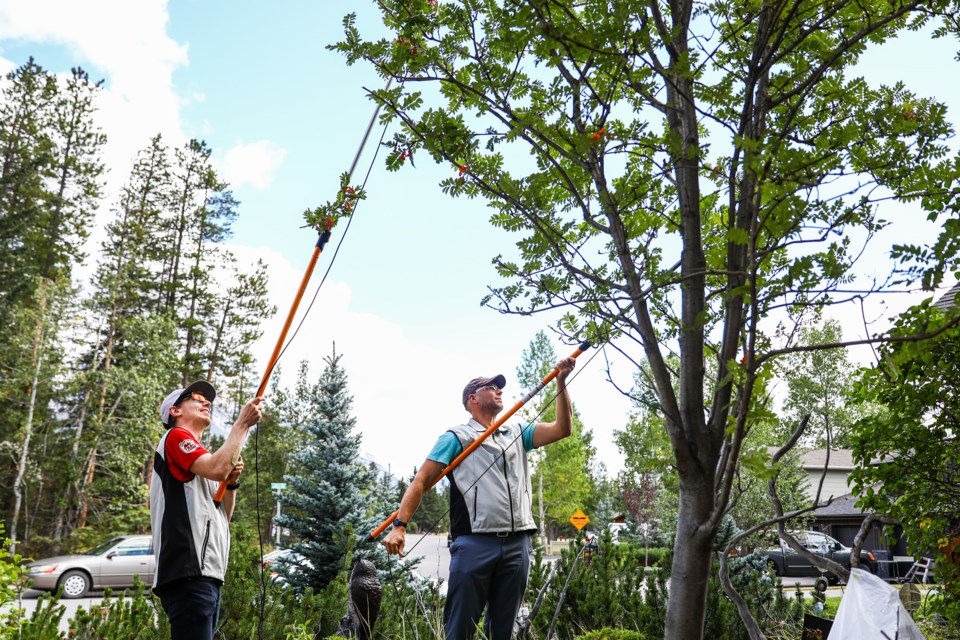CANMORE – Several black bears are feasting on their favourite foods in and around Canmore and neighbouring communities, prompting a plea to residents to pick or remove their fruit trees.
A mama bear and her young ones were seen in a tree eating chokecherries by riverside trails in the Larch area last week, while several other bruins have been seeking out fruit and berry-producing shrubs and trees in residential neighbourhoods on both sides of the valley and in nearby MD of Bighorn hamlets.
Nick de Ruyter, a program director with Bow Valley WildSmart, said bears that learn there are trees laden with ripe fruit in town will come back again-and-again, even in broad daylight, which puts both bears and residents in harm’s way.
“Because most of the buffaloberry crop has not been very good this year, I think there’s going to be some hungry bears looking for other food sources,” he said.
“Fruit-bearing trees are the most obvious choices, so we really have to be proactive in order to avoid a potentially busy fall of bears in town looking for food to fatten up before denning.”
The Bow Valley human-wildlife coexistence task force, which released 28 recommendations in 2018 to reduce the number and severity of encounters between people and bears, identified fruit trees as a significant wildlife attractant.
Once they get into common fruits or berries such as chokecherry, crabapples, dogwood and mountain ash in residential communities, bears can become bold and aggressive. This has led to relocation and destruction of bears for public safety reasons over the years.
Before being shot and killed by a hunter in British Columbia in 2017, it was not uncommon for famous female grizzly bear No.148 to feast on crabapple trees in yards on the periphery of the Banff townsite.
More often than not, de Ruyter said it is the bears that pay the price for getting into fruit trees in residential yards.
“Relocating a bear is definitely not very successful at the best of times, but in the fall it’s a tricky time and normally doesn’t have very good results,” he said.
“They’re going to a new place, and they’ve got to potentially find some last-minute calories and find a place to den. They might have to fight off other territorial bears in the new area they’re being moved to, which will waste precious calories.”
In an effort to reduce conflict between bears and people, the Town of Canmore has a voluntary fruit tree removal incentive program.
Homeowners in the priority areas, primarily on the edges of town, can express their interest in participating in the program, which covers 50 per cent of the removal cost to a cap of $300 if you use an arborist or tree removal service to chop down the tree.
In Canmore, it is also against the law under the wildlife attractant bylaw to let fruit or berries accumulate on trees, bushes, or the ground. Fines for doing so can range between $250 and $10,000.
To make it easier to deal with the ongoing fruit management problem in residential neighbourhoods, Bow Valley WildSmart lends extendable fruit pickers and pruning shears, which are available to valley residents free of charge.
“At a minimum, remove the fruit from your trees, while the best long-term solution is to remove those fruit trees and replace them with non-fruit bearing trees,” de Ruyter said.
“We can’t prevent bears from walking through town or through a backyard, but we can certainly prevent them from lingering by removing all attractants.”




